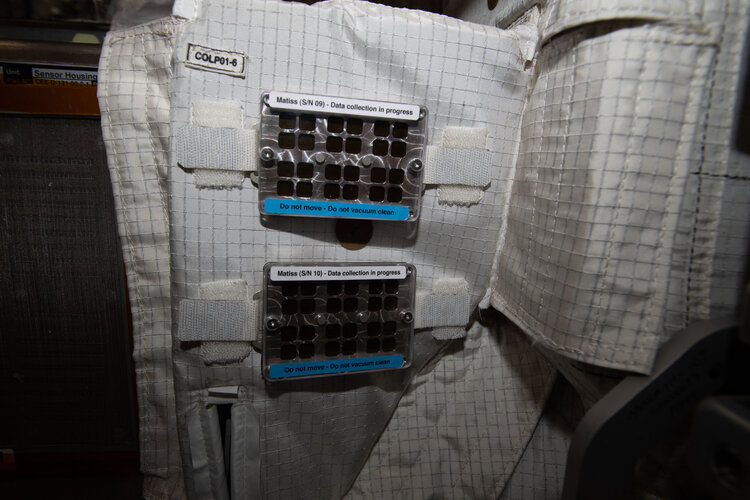
Image:
A ‘do not touch’ directive applies to both a Matisse painting and this Matiss experiment on board the International Space Station.
Designed to test the antibacterial properties of hydrophobic (or water-repelling) surfaces on the Station, the sample holders of the upgraded Matiss-2.5 experiment have done their work for roughly a year on board and are now back on Earth for analysis.
Bacteria are a big problem in space as they tend to build up in the constantly-recycled atmosphere of the Space Station. For the six astronauts living in humanity’s habitat in space, keeping the Station clean is an important part of their life to avoid bacteria and fungus. Every Saturday is cleaning day, when the whole crew wipe surfaces, vacuum and collect waste.
Matiss or Microbial Aerosol Tethering on Innovative Surfaces in the international Space Station, driven by French space agency CNES, in collaboration ENS de Lyon and CEA-Leti, and commissioned in 2016 by ESA astronaut Thomas Pesquet, examines the performance of five advanced materials in preventing illness-causing microorganisms from settling and growing in microgravity.
The experiment consists of plaques each containing the five materials to be tested plus a glass control surface. The units are open on the sides to let air flow naturally through and collect any bacteria floating past.
The first set of the Matiss experiment, known as Matiss-1, provided some baseline data points for researchers. Four sample holders were set up in three different locations within the European Columbus laboratory, where they remained for six months.
Once these samples were returned to Earth, researchers characterised the deposits formed on each surface and used the control material to establish a reference for the level and type of contamination expected over half a year.
A continuation of the experiment, known as Matiss-2, saw four identical sample holders containing three different types of material installed in a single location in Columbus. This study aimed to better understand how contamination spreads over time across the hydrophobic and control surfaces. The upgraded Matiss-2.5 aimed to study how contamination spreads, this time spatially, across the hydrophobic surfaces using patterned samples.
The materials are a diverse mix of advanced technology – from self-assembly monolayers and green polymers to ceramic polymers and water-repellent hybrid silica. The smart materials should stop bacteria from sticking and growing over large areas, and effectively making them easier to clean and more hygienic – but which one works best?
Understanding the effectiveness and potential use of these materials will be essential to the design of future spacecraft, especially those carrying humans father out in space.
The findings could also lead to the development and greater use of antimicrobial surfaces on elevator buttons and door handles, in bars, on public transport and in other high-traffic areas.
Click here for original story, Keep this surface dirty
Source: ESA Space News